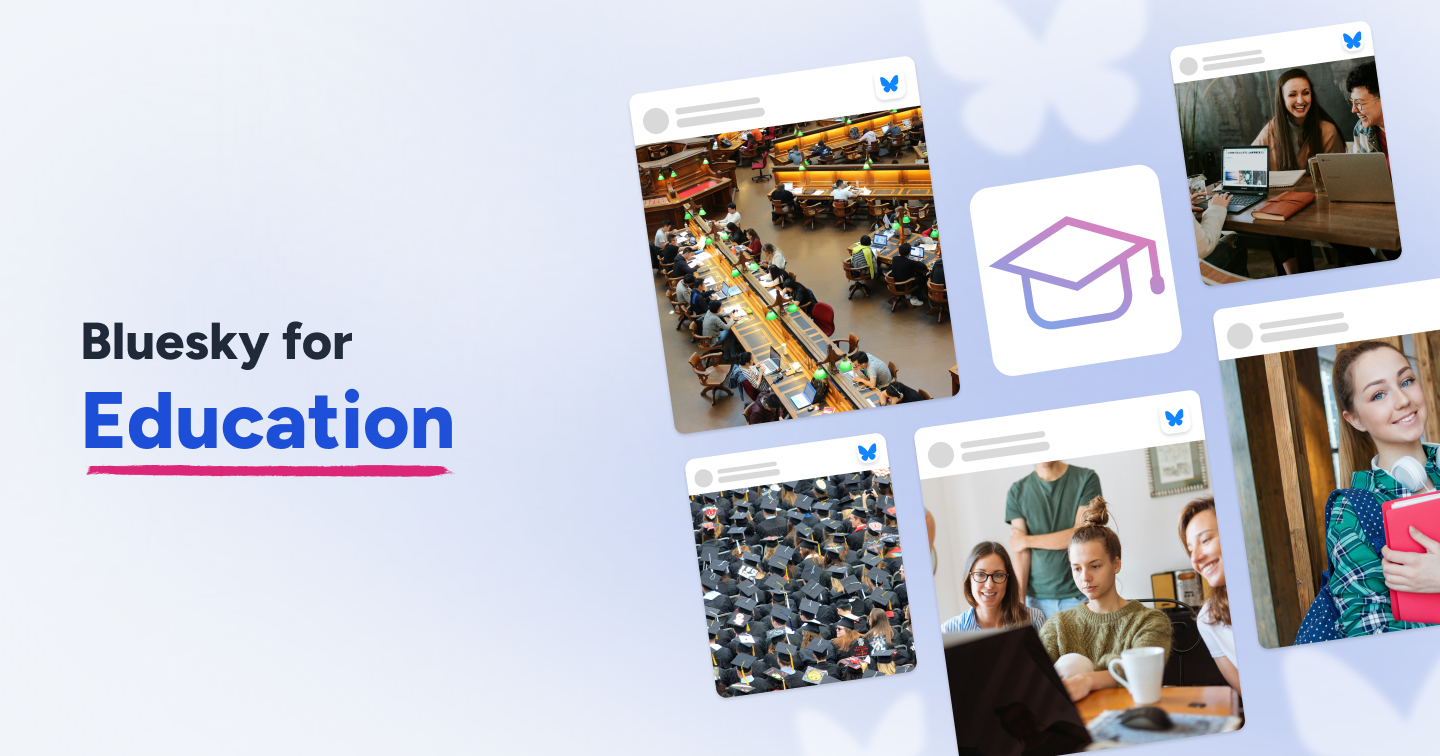Summary
👉 Bluesky is a new microblogging social platform built on an open protocol, giving users more control over their feeds and algorithms.
👉 Bluesky works well for educational institutions due to its in-depth content moderation controls, minimal ad clutter, and existing niche communities.
👉 To see if Bluesky fits your marketing strategy, understand your goals, check if your target audience is active there, and ensure you have enough resources.
👉 To grow your presence on Bluesky, complete your profile, choose relevant starter packs, and engage consistently with meaningful content.
Twitter (now X) was once the go-to platform for academic discourse, a vibrant space for sharing research, debating ideas, and building community.
But that’s changed. Twitter is now embracing looser content restrictions, and with the rise in bot activity and algorithmic noise, many academics and institutions feel their voices are getting lost.
As a result, academics are leaving Twitter—and fast.
Janja Komljenovic, a senior lecturer at the University of Edinburgh, explained her reason for leaving Twitter:
“The things I would see were so irrelevant, or stupid, or extremist. There were fewer and fewer posts from my network that I would see.”
Amid this shift, Bluesky is emerging as the platform of choice for many researchers and higher education institutions. Decentralized by design, it offers a space where conversations are shaped by curiosity, not algorithms.

But understanding how to build presence and influence on Bluesky takes intention.
Unlike Twitter, Bluesky is still evolving, and with fewer built-in discovery tools, universities must learn how to engage strategically.
This guide explores:
- What makes Bluesky a promising alternative
- How can higher institutions thrive on this new platform
- How to make your new account on Bluesky (step-by-step)
What is Bluesky?
Bluesky is a decentralized social platform founded by Jack Dorsey (the original creator of Twitter) and offers a more open, user-controlled, and transparent social networking experience.
Bluesky's interface is quite similar to that of early Twitter. Users can share short text posts (with images & videos) and reply, repost, quote posts, and like other posts.
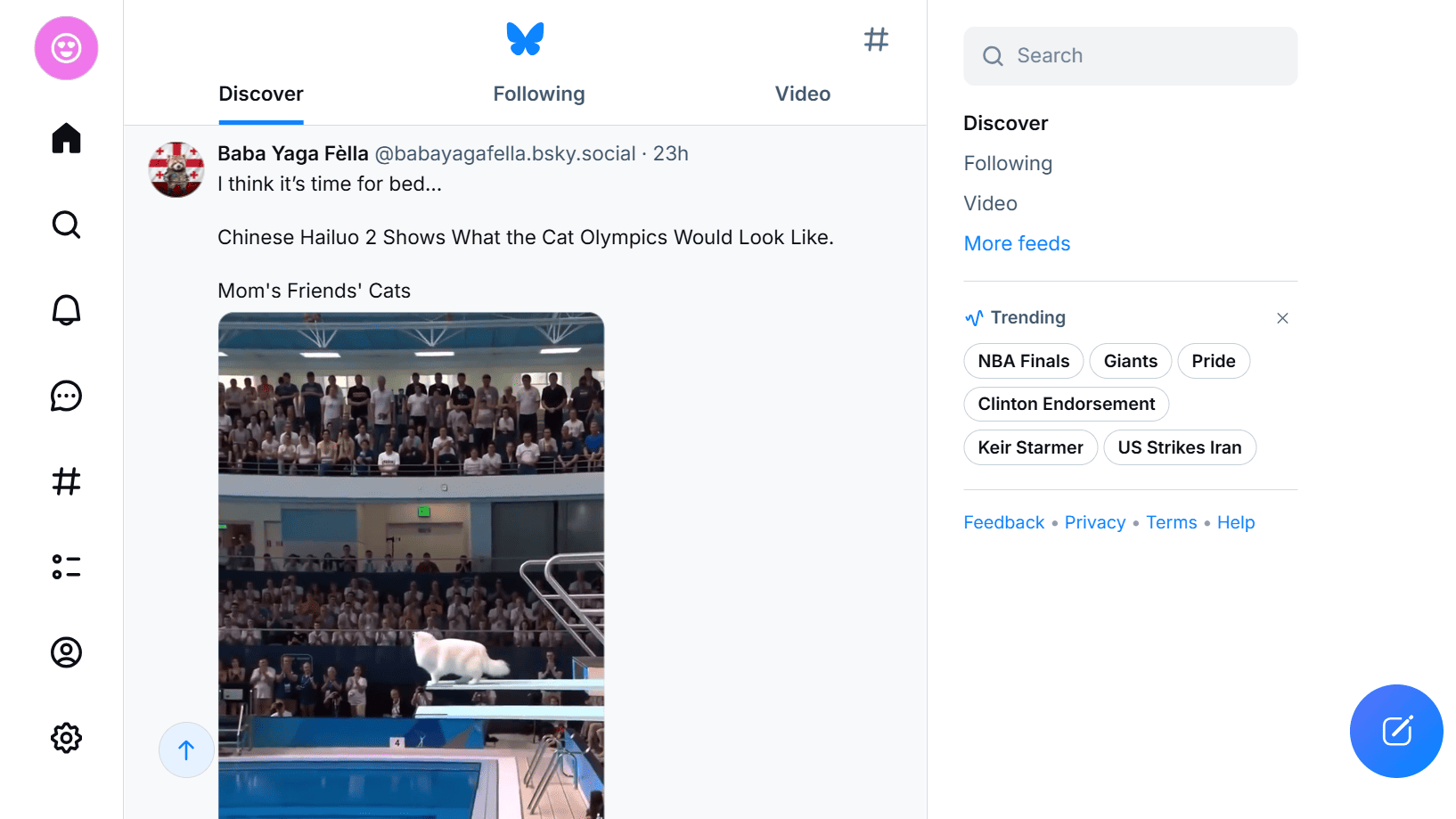
But differs from X (former Twitter) in these ways:
- It runs on a decentralized protocol called Authenticated Transfer Protocol (AT Protocol), which gives users full control over their data and feed algorithms.
- It does not use user data to train AI or flood users with ads. It generates revenue through custom domain sales and optional subscriptions for advanced features.
- It is a more community-focused platform that allows users to create or join different feeds (groups) on specific topics or interests.
Earlier, Bluesky access was limited to invitation-only, and it still managed to gather over 3 million users. Since going public in February 2024, the platform has grown rapidly, reaching 35.98 million users as of this writing.
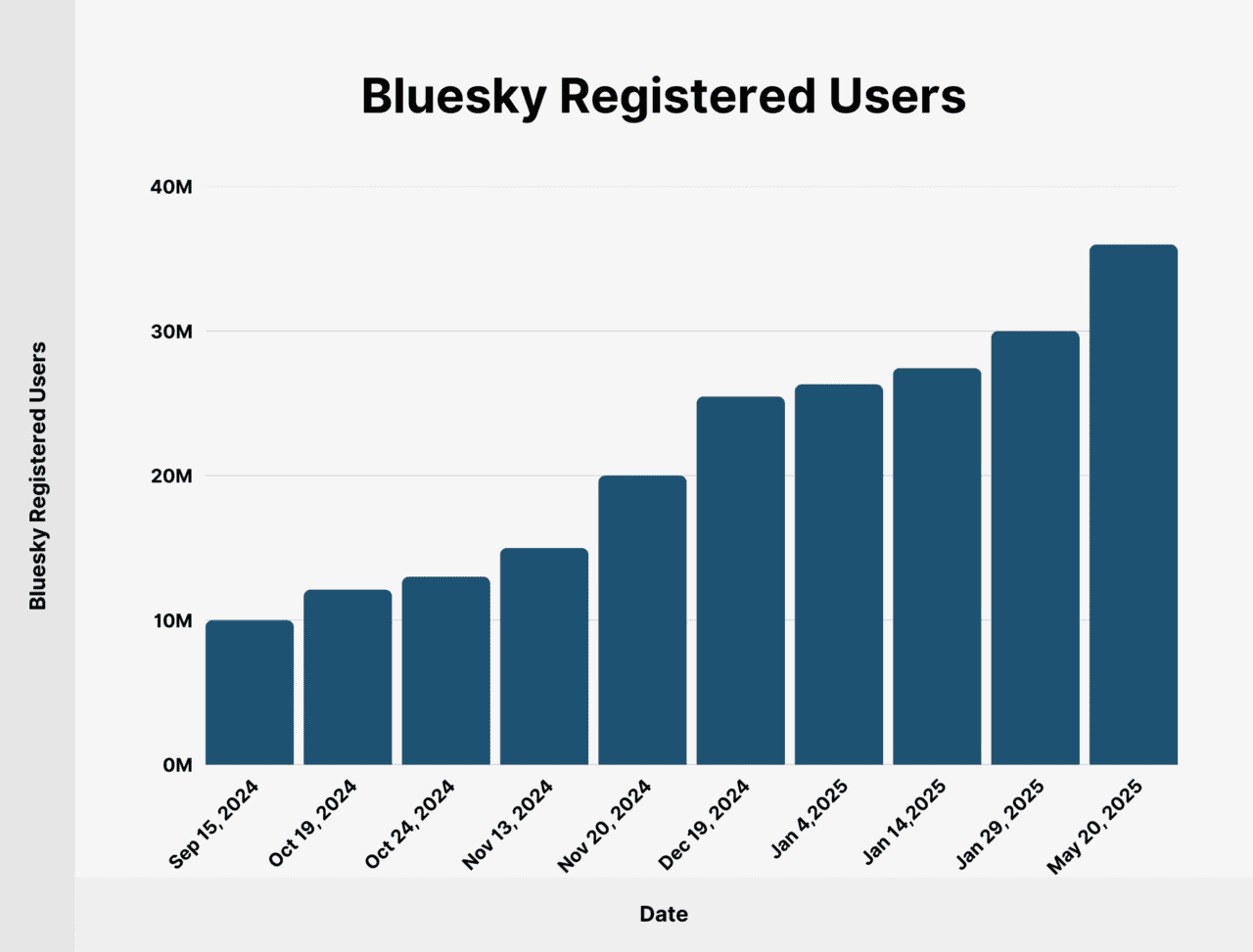
Why does Bluesky work for Higher Education?
1. Moderation and protection
Unlike other platforms where the company decides what’s allowed or hidden, Bluesky lets users set their own rules. You can use Bluesky’s built-in moderation tools or use third-party moderation services to:
- Create a warning for specific posts
- Hide some posts completely, like ones made using AI, or posts by politicians who take donations.
- Make and share lists of accounts to mute or block
Such unprecedented control allows higher education accounts to:
- Filter harmful or disruptive content (like hate speech, spam, or misinformation) to create focused feeds that protect their campus values.
- Each faculty can set its own moderation rules. For instance, a medical school might block AI-generated health misinformation, and the political science department might tag posts from verified politicians for debate.
- Create and share lists of trusted or blocked accounts with their own community to stay connected with verified and relevant voices
2. No ad clutter
There is no advertising on Bluesky.
Jay Graber, CEO of Bluesky, told CNBC, “Bluesky is not going to build an algorithm that just shoves ads at you, locking users in. That’s not our model.”
In another interview with CNBC, Rose Wang, COO of Bluesky, added, “There’s no immediate plans for Bluesky to build an online ad business, but the company is open to the idea as long as it’s not an intrusive experience.”
This makes it clear that even if ads are introduced in the future, an aggressive or disruptive advertising model is not part of Bluesky’s vision.
It will help educational institutions to maintain cleaner communication with strong messaging on sharing knowledge, research, and campus updates.
There’s also no pressure to "sell" content or use clickbait to compete with paid promotions. This encourages the credibility of your academic discussions and community.
3. Existing user base of academics, researchers, and tech pros
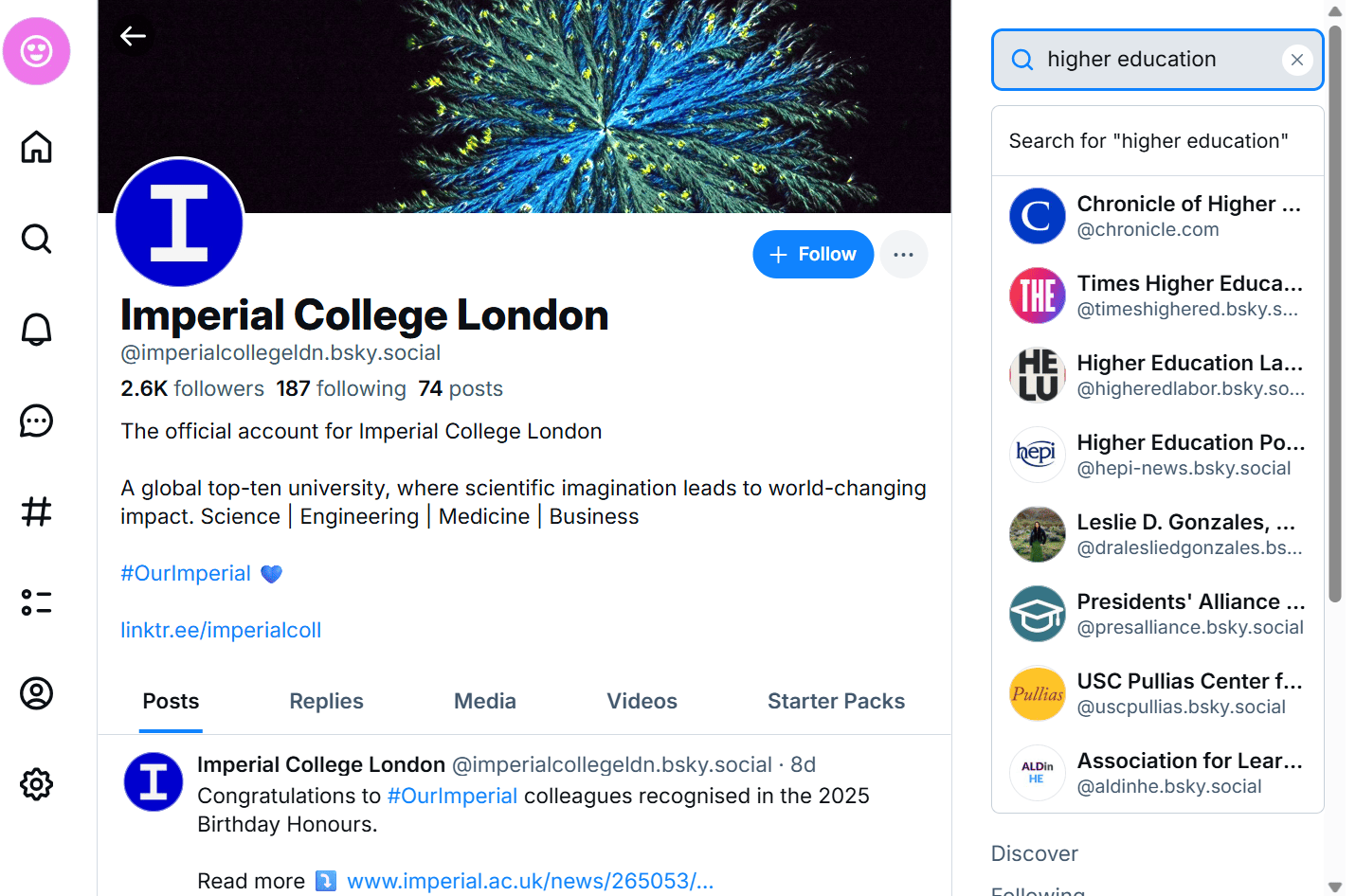
Bluesky has a large audience base of 35.98 million users and has become a hub for academics, researchers, and tech pros communities.
These communities can choose or create algorithmic feeds of posts related to their selected topics.
Bluesky dismantles traditional single-algorithm models and prioritizes user choice by offering multiple chronological feeds and customizable communities.
This means universities can engage directly with niche academic communities and get their content seen by relevant audiences, not buried by generic trends.
4. Emphasis on open discourse and knowledge sharing
Unlike traditional social platforms that often prioritize viral content, Bluesky encourages thoughtful discussion and genuine conversation.
The reason is that Bluesky is a more community-focused platform and gives users control over their content and feeds. They can choose algorithms specific to the communities they follow and can hide or block content and accounts that may be harmful or disruptive to the community.
Also, Bluesky Social enforces strict guidelines that prohibit harassment, election interference, disruptive behavior, and any illegal or harmful activities. Such control helps align closely with academia's core values of intellectual freedom and information sharing.
5. Feeds are more topic-focused
Custom feeds are where Bluesky really shines.
Unlike other social media platforms where you’re confined to whatever content the algorithm thinks you’re going to enjoy, Blue Sky allows you to be more intentional about the kind of content you want to see.
Bluesky’s strict content guidelines, strong user control, and intentional focused community establishment help users to stick to the topic and get involved in meaningful conversations.
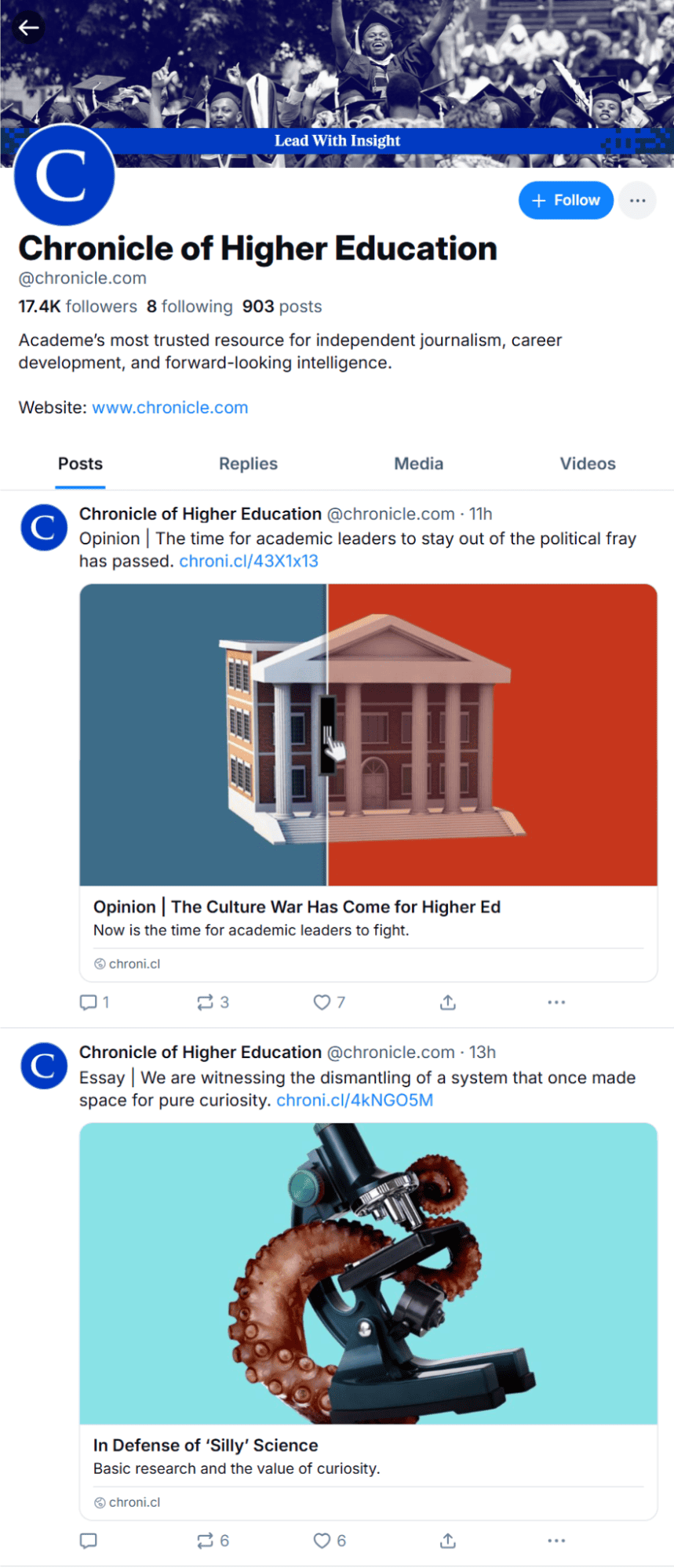
This helps higher education institutions to create space for authentic dialogue around education, policy, innovation, and student life without the noise or distractions typical of mainstream social media.
6. Starter packs
Starter Packs create a shared online space where everyone stays in the loop with announcements, discussions, and academic content like a custom social feed just for your campus.
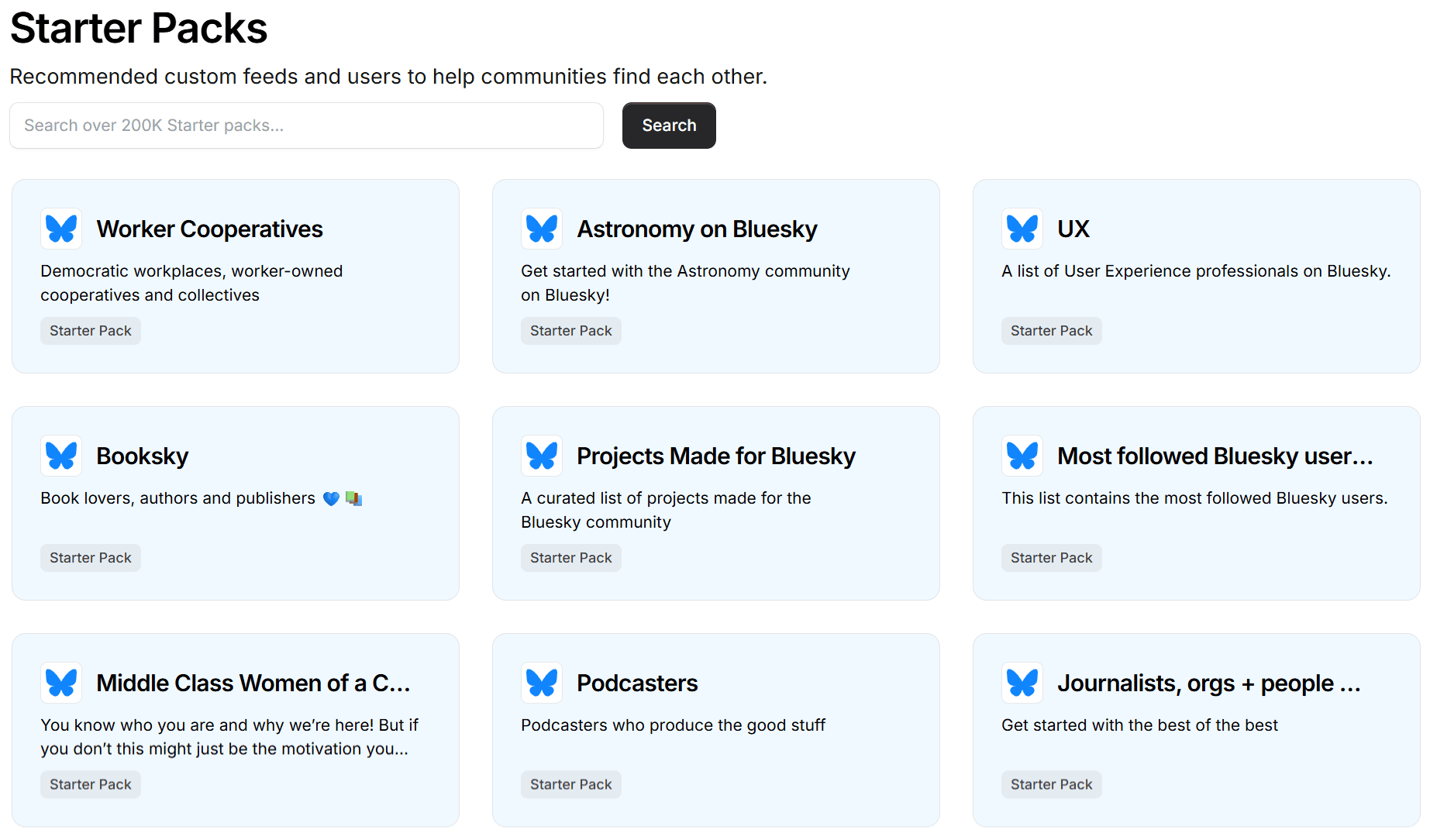
Bluesky offers recommendations of over 200K communities in starter packs (pre-made bundles on different niches) to its users.
Higher education institutions can find communities of interest and add them to their account, so when someone new (students, faculty, or staff members) joins Bluesky and follows the account, they can instantly connect with the community.
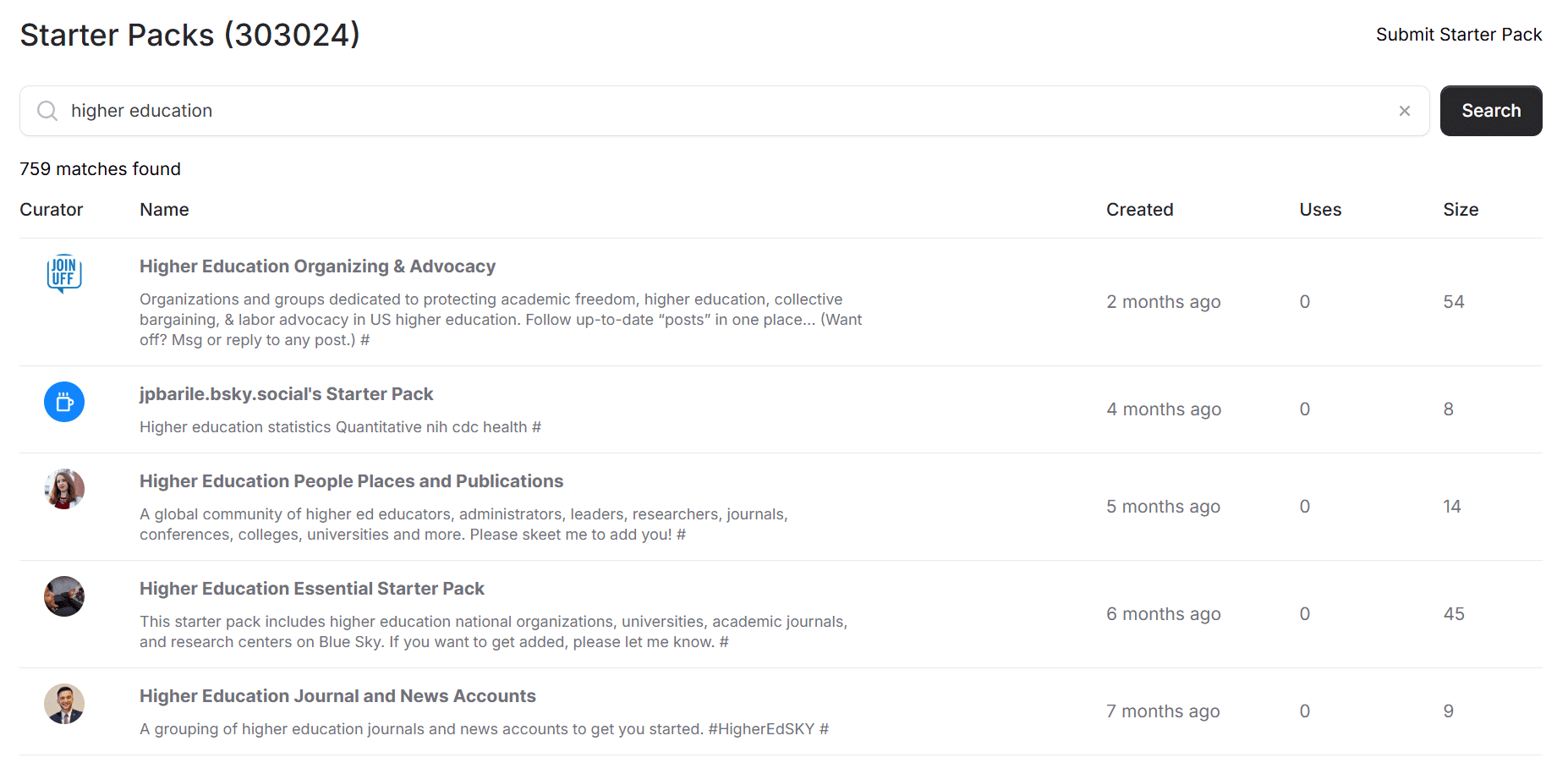
Is Bluesky Right for Your Higher Education Institute?
➡️What is your goal?
With their presence on social platforms, higher education institutions may have the following goals:
- Showcasing campus success and students' culture to promote their college or university
- Interacting with students, alumni, faculty, and stakeholders for engagement and student support
- Sharing important updates, research, and academic contributions for an informative presence
- Highlighting student achievement and alumni content to establish a community
You can aim for a comprehensive presence by posting a little about everything, or be specific to a couple of things to create a distinct social media personality and establish expertise in each of them.
Bluesky currently doesn’t support paid advertising, which means you can’t run promoted posts or sponsored content to expand reach.
Instead, the platform is for establishing a community first presence, making it a great fit for institutions that want to establish themselves as thought leaders.
Recommended read: 10+ Ways Universities Can Use Social Media Aggregators Effectively
➡️Do you have the capacity?
Managing a social media platform requires effort and consistency. Bluesky is no exception. Even though it’s less commercial and algorithm-driven than other platforms, maintaining an active and meaningful presence still demands bandwidth.
You will at least need a small, focused team (of 1 to 2 people) that will dedicate 2–3 hours per week.
Bluesky doesn’t require promotional or heavy visual posts, but it will require consistently posting college updates (in texts and organic videos). The effort is more about staying consistent with real conversations.
Hence, if your team can commit to a light but regular posting schedule and monitor community interactions, you can maintain a credible Bluesky presence without overextending your resources.
➡️Is your target audience on Bluesky?
For higher education institutions, this could include prospective students, current students, faculty members, alumni, or academic peers. If your target audience isn’t active on Bluesky, your efforts may not yield meaningful engagement or results.
Currently, Bluesky has a growing user base of academics, tech professionals, early adopters, and people migrating from traditional platforms.
You can look for topic-based feeds on Bluesky related to education, student life, admissions, or your local area to check your TG presence.
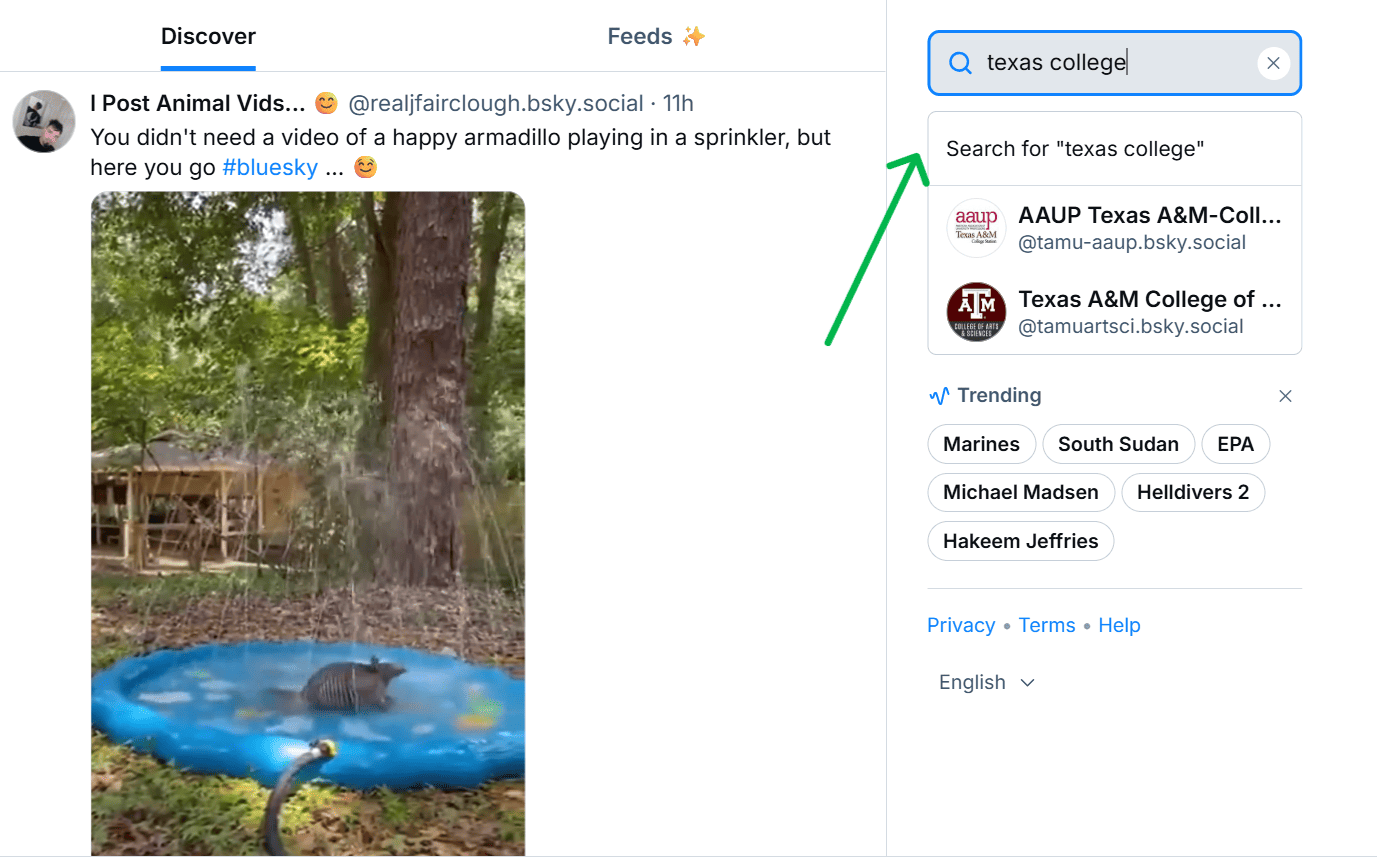
Recommended read: Social Media Marketing for Universities: Top 10 Strategies in 2024
How to set up a higher education Bluesky account?
Step 1: Create your Bluesky account
Create your Bluesky account by filling in information such as your email address, password, and birthdate.
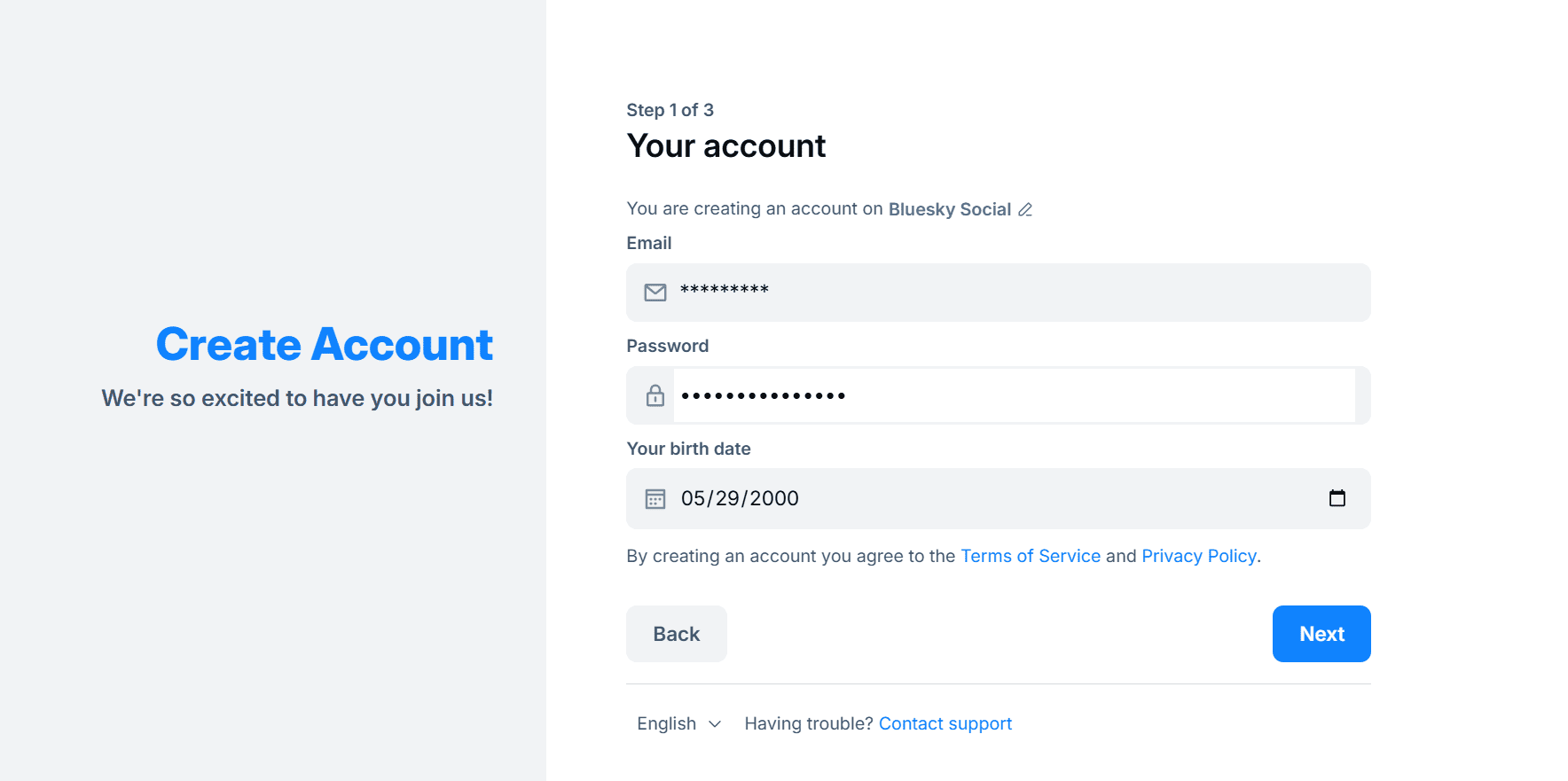
Next, pick a unique handle that reflects your institution’s name.
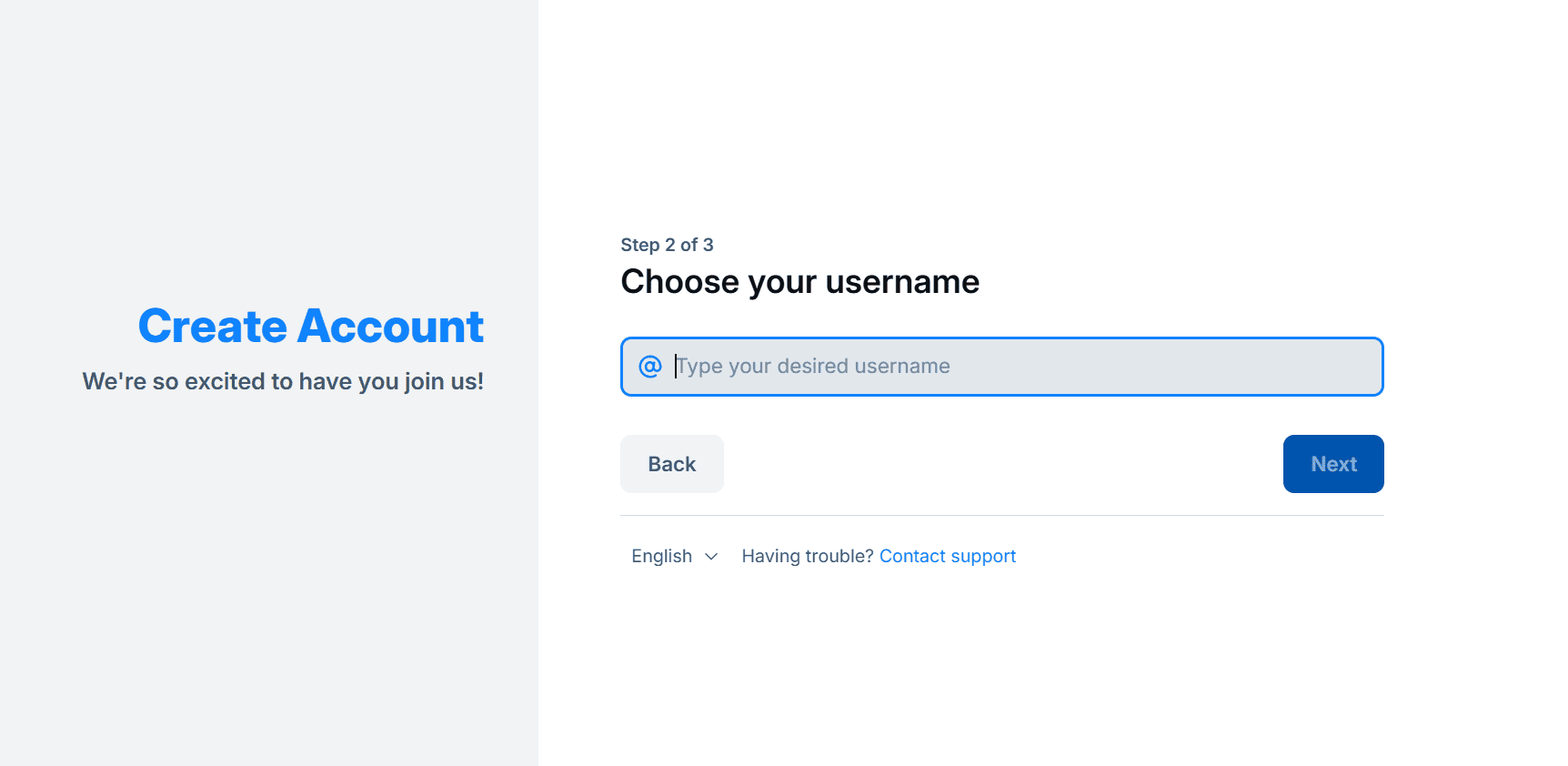
Step 2: Complete your profile
Add your profile photo and choose topics that align with your niche, like education, research, sustainability, or student life. These choices will help personalize your Discover feed.
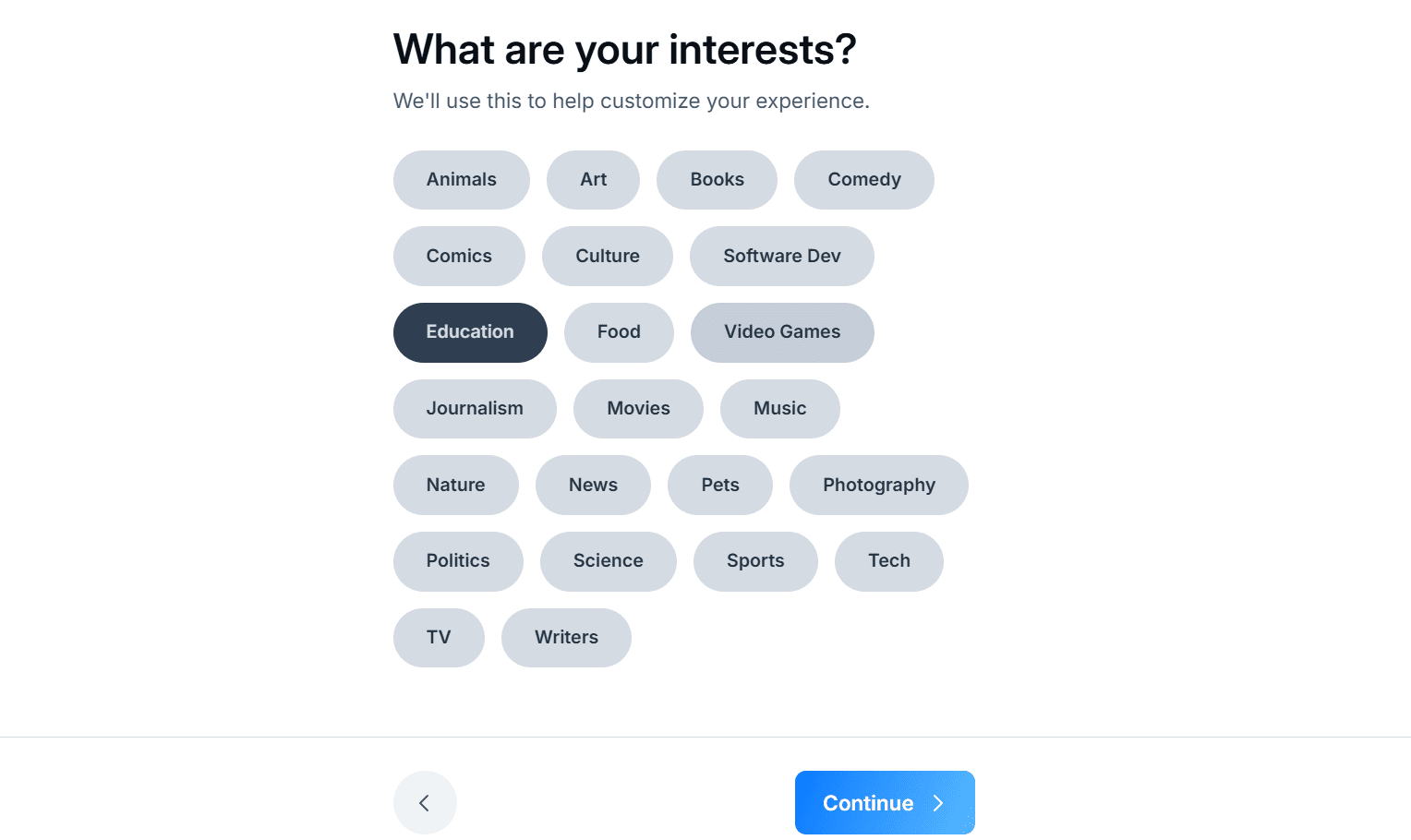
Next, follow 10 people instantly from your same niche to build a network.

You can also search and follow more people from your niche using the search function.
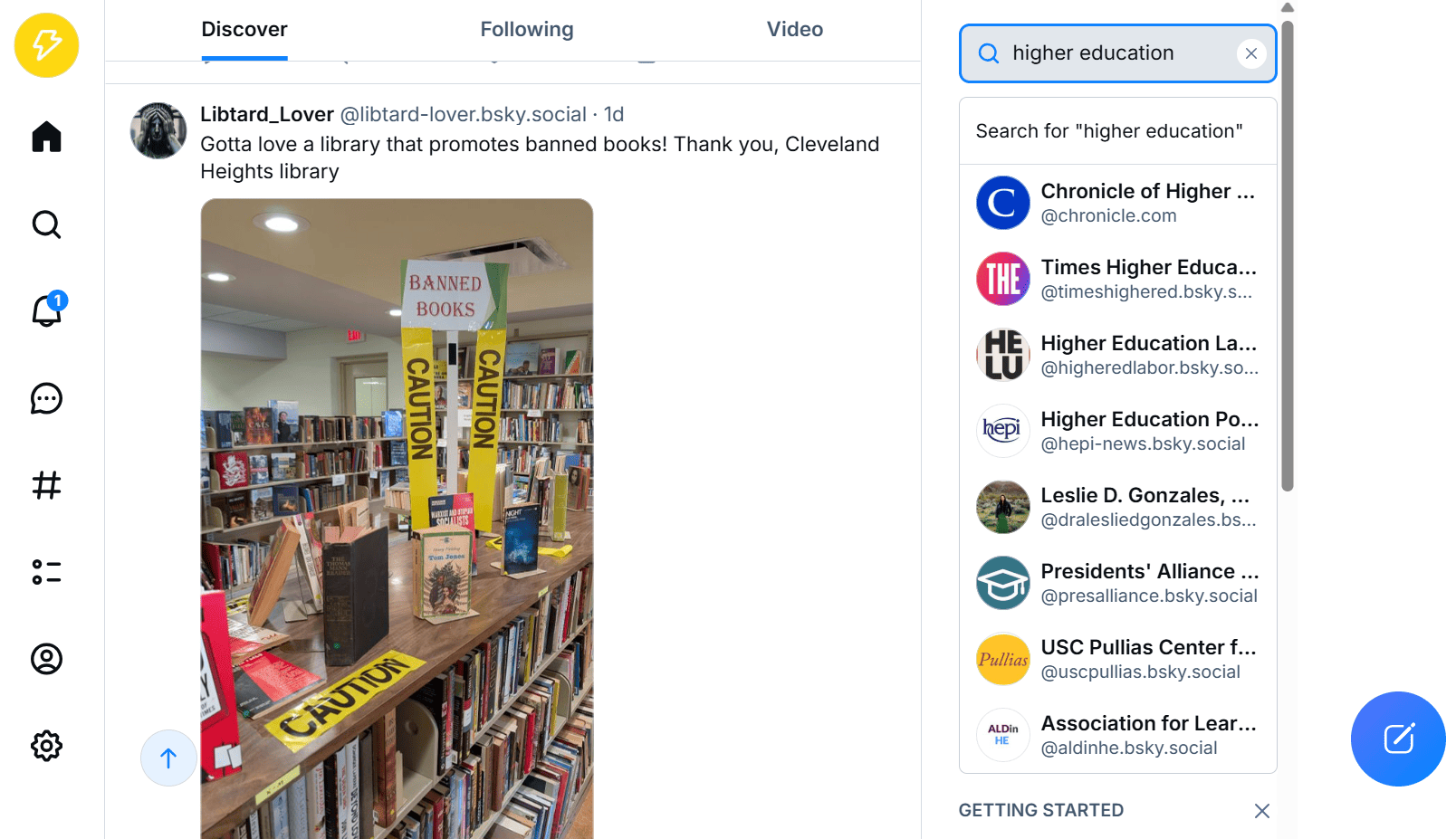
Once you verify your email, click the “New Post” button and introduce your institution—perhaps highlight your first impressions of the platform or share a fun fact about your campus.
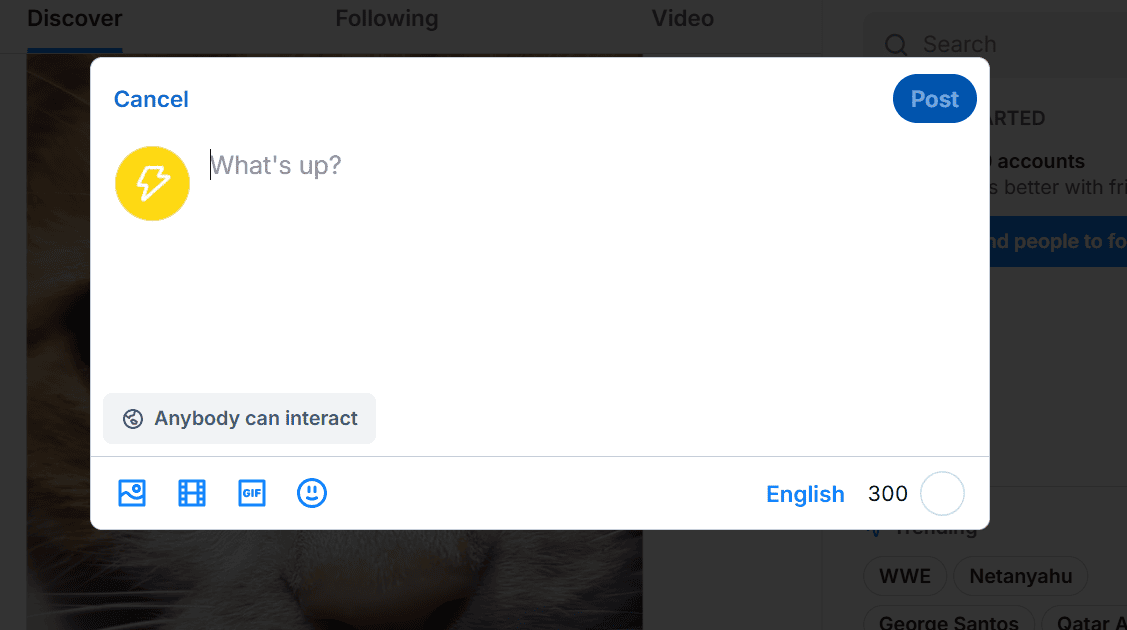
Step 3: Use Starter Packs
Go to your profile page and choose starter packs to create one for your institution.
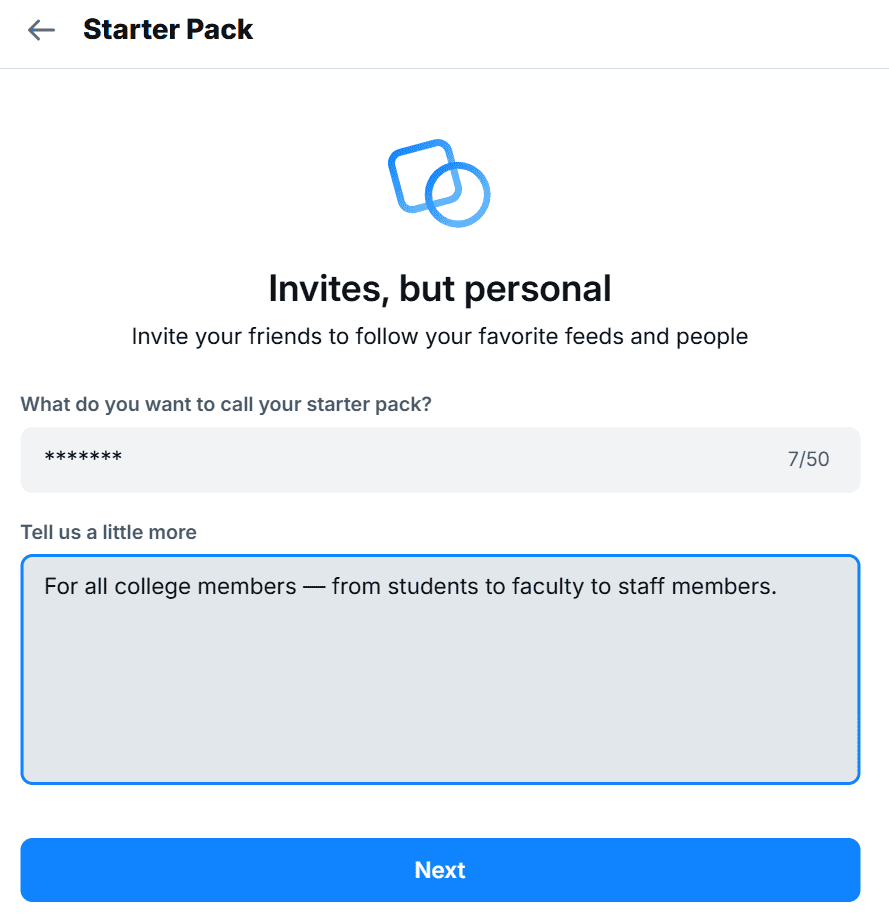
Add members to this pack.
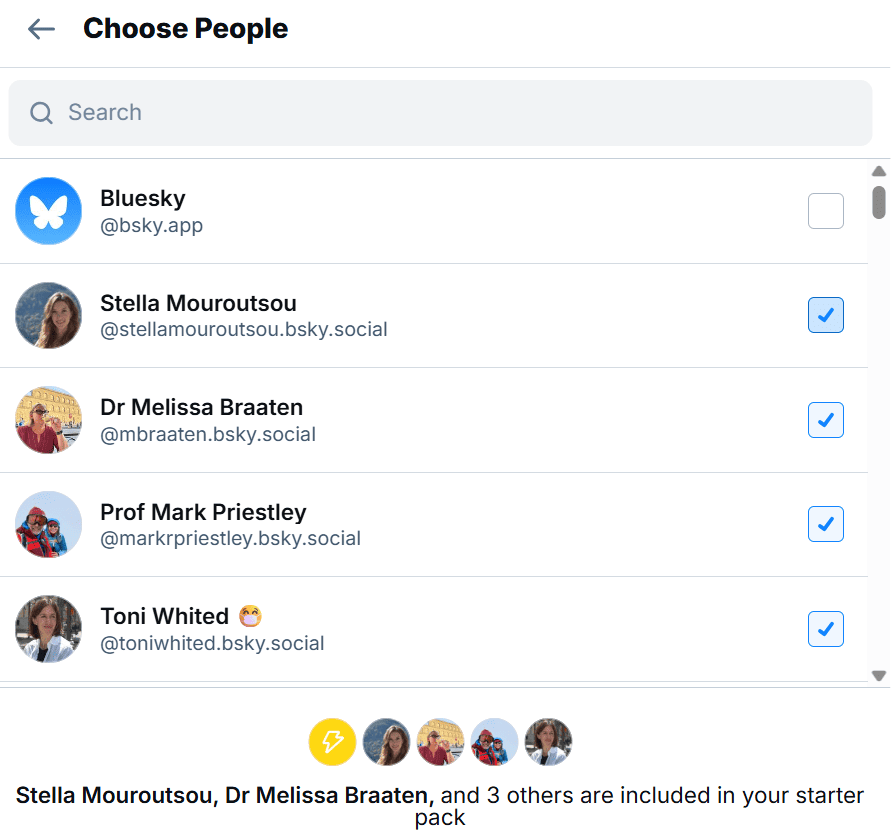
Next, add pre-made communities to your starter pack to create a comprehensive experience for your members.
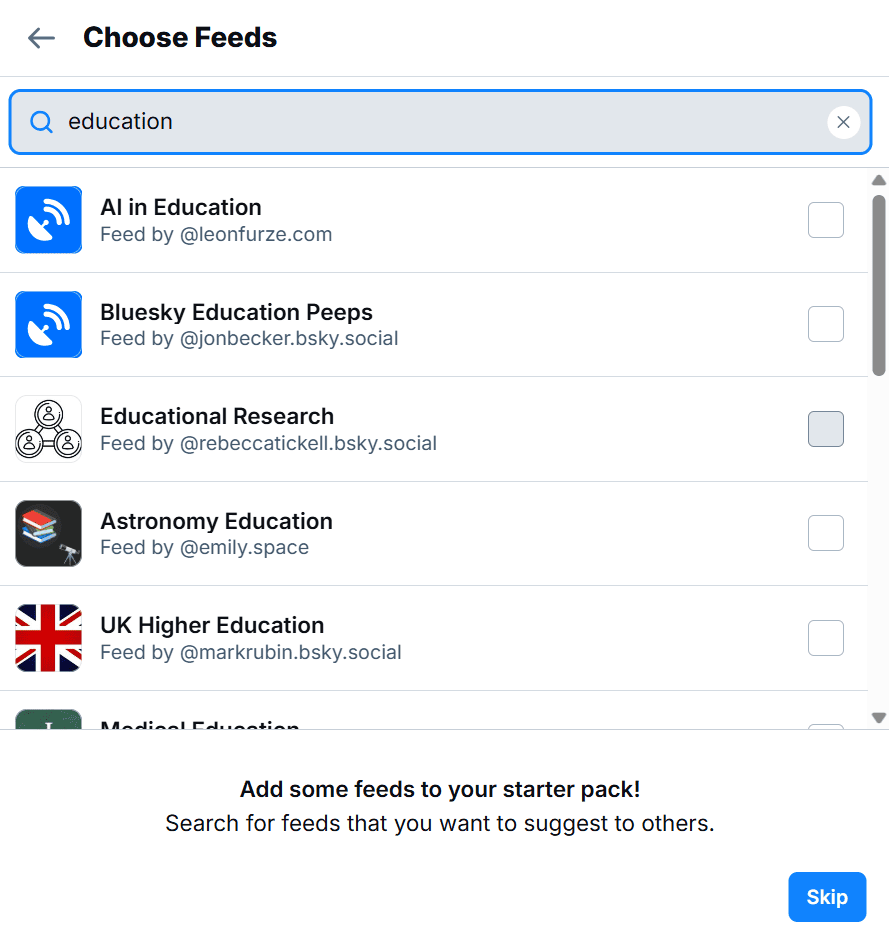
This feed will instantly display posts from all the selected members in one place and will keep all students updated at once.
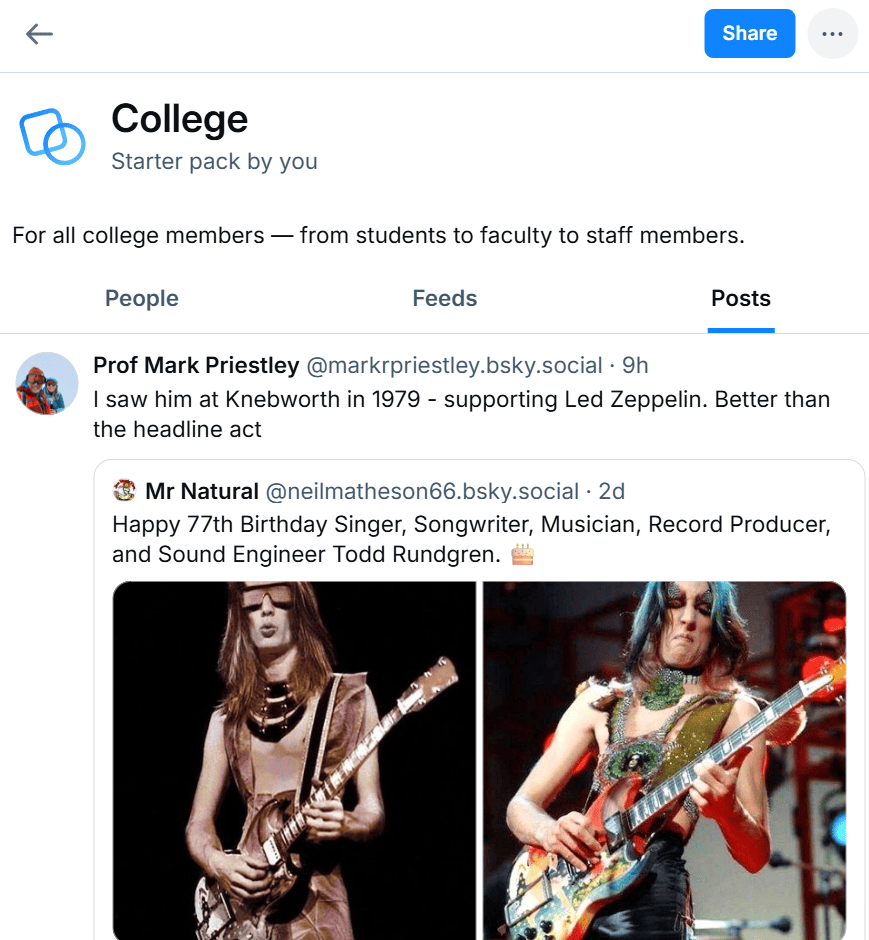
Step 4: Add Custom Feeds
You can also add custom feeds separately to your account.
Tap “#” to search and add feeds based on your specific interests, such as education or student, and pin it to your profile to create a customized algorithm.
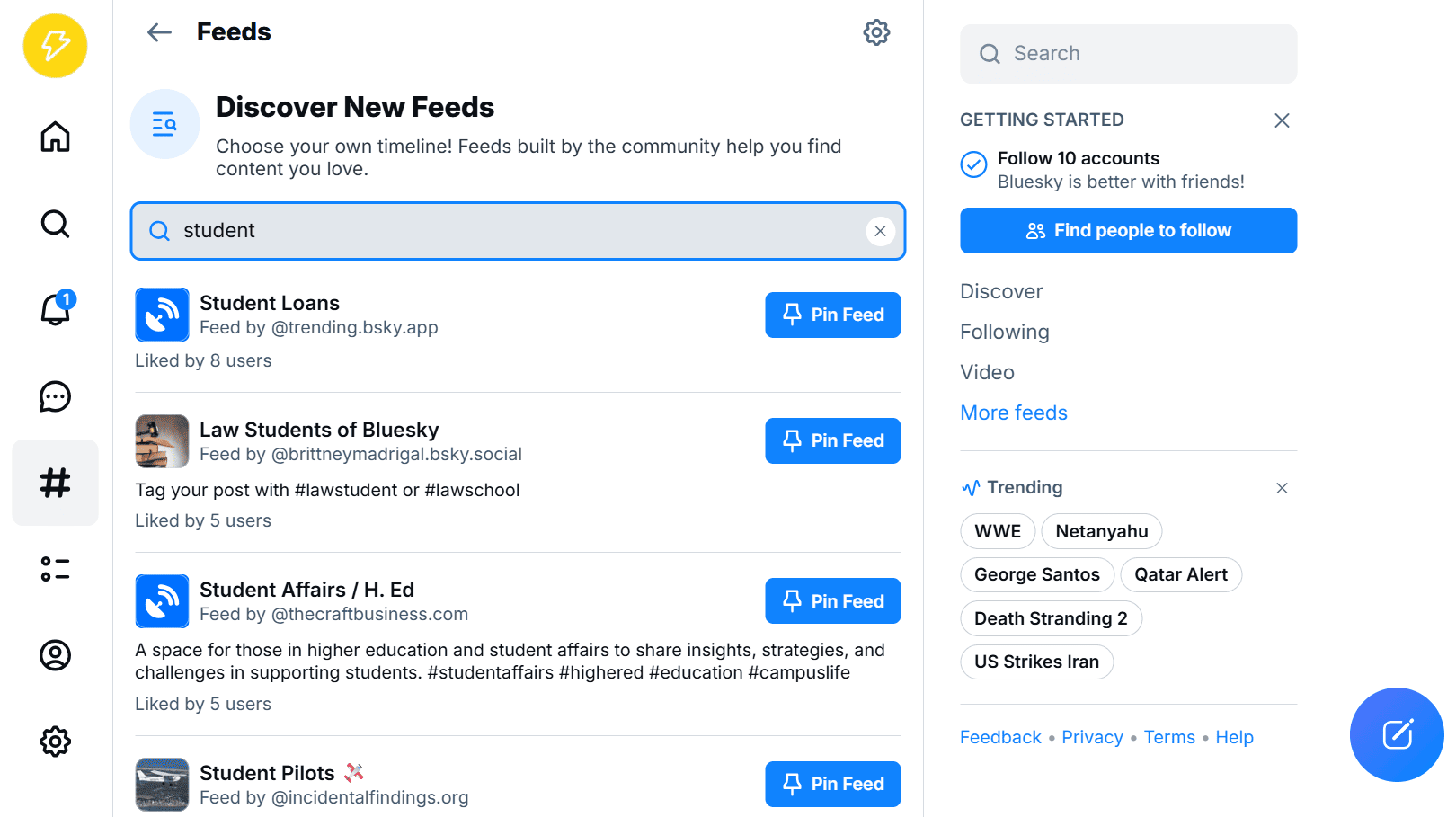
Step 5: Moderate your experience
If you encounter trolls or off-topic content, use the block feature. Go to a user’s profile, click the three dots, and select “Block Account”. They’ll no longer appear in your feed or interact with you.

You can also mute words and tags on Bluesky so that posts containing those specific terms won’t appear in your feed.
5 tips to grow your higher education Bluesky network
1. Complete your profile before anything else
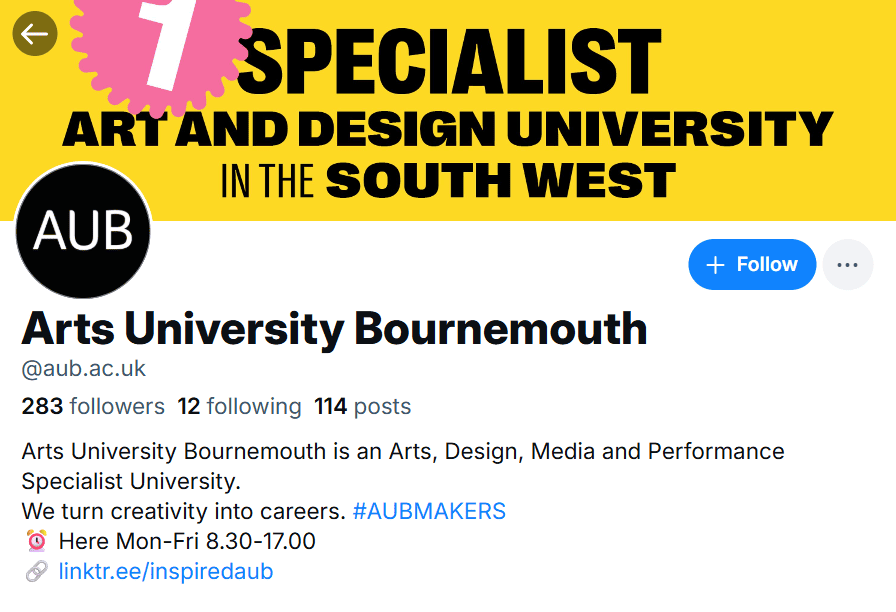
Before you start posting, set up a complete and recognizable profile. Use your official university or department logo, write a bio that reflects your academic focus, and include a link to your website or landing page.
Generic, faceless profiles often come across as bots and are often ignored or even blocked.
Also, a standout feature of Bluesky is that it allows you to use your domain name as your handle. This helps with verification and adds clarity to your account. So, make sure to include it in your bio.
2. Create a “Starter Pack”
Starter packs build a stronger internal network and make your university’s presence more discoverable.
Use this feature to:
- Create a pack of official university handles (like your main account, faculty accounts, student orgs, etc.).
- Share this pack with new students, staff, or alumni joining Bluesky to help them instantly plug into your ecosystem.
- Keep your academic community connected through a common feed that feels like a digital campus bulletin board.
3. Create tailored content for your target audience
Why are you on Bluesky? Who are you trying to reach? Start with these two questions. Then shape your content strategy accordingly.

Some ideas:
- If targeting new students, post about campus life, admissions updates, and student achievements.
- If reaching alumni, highlight reunions, faculty news, or research breakthroughs.
- Faculty-focused? Share academic publications, conference invites, or collaborative opportunities
4. Use accessibility options (e.g., Alt Text)

Inclusive communication helps everyone and makes your content more discoverable and respected.
Always add alt text to your images to describe what they contain. This improves the experience for users with visual impairments who rely on screen readers. It also signals professionalism and social responsibility, values deeply appreciated in the higher education space.
5. Proactivity Leads to Community Cultivation
Growing a Bluesky presence isn’t about going viral, it’s about nurturing a community.
Be active: reply to comments, repost relevant academic discussions, join trending feeds, and follow voices in your niche. The more you participate in meaningful ways, the more visible and respected your institution becomes.
FAQs
1. Is Bluesky better than Twitter for universities and colleges?
Bluesky offers more control and customization than Twitter, especially with features like custom feeds and moderation tools. Unlike Twitter, it’s ad-free, doesn’t sell data, and promotes thoughtful, topic-focused discourse. If your institution values academic freedom, community engagement, and controlled visibility, Bluesky might be a better fit. However, Twitter still offers broader reach, so the best choice depends on your goals.
2. How can a higher education institution benefit from Bluesky’s decentralized model?
The decentralized structure of Bluesky empowers institutions to set their own moderation policies, create tailored content feeds, and engage with communities without platform-imposed algorithms. This means more relevant engagement, less spam or noise, and the ability to build trust-based, interest-driven academic communities.
3. Who is the ideal audience for higher education accounts on Bluesky?
Bluesky’s user base includes academics, researchers, tech professionals, and digital early adopters. It's ideal if you’re targeting current and prospective students, alumni, faculty, or thought leaders in education and policy. You can also find niche student or research-based feeds to join or create, making it easier to attract the right followers.
4. Can I promote events or admissions without ads on Bluesky?
Yes! While you can’t run paid ads, Bluesky encourages organic reach through custom feeds and starter packs. You can share updates about events, deadlines, or student stories with a community already interested in your niche. With strategic use of starter packs and custom feeds, you can still drive awareness and participation without spending on promotions.
5. Do I need a big social media team to manage a Bluesky account for my university?
Not at all. Bluesky is relatively low-maintenance compared to other platforms. A small, focused team of 1–2 people can manage it effectively with 2–3 hours per week. Since there’s no pressure to produce clickbait content or manage paid promotions, your focus can remain on meaningful engagement, announcements, and community conversations.
